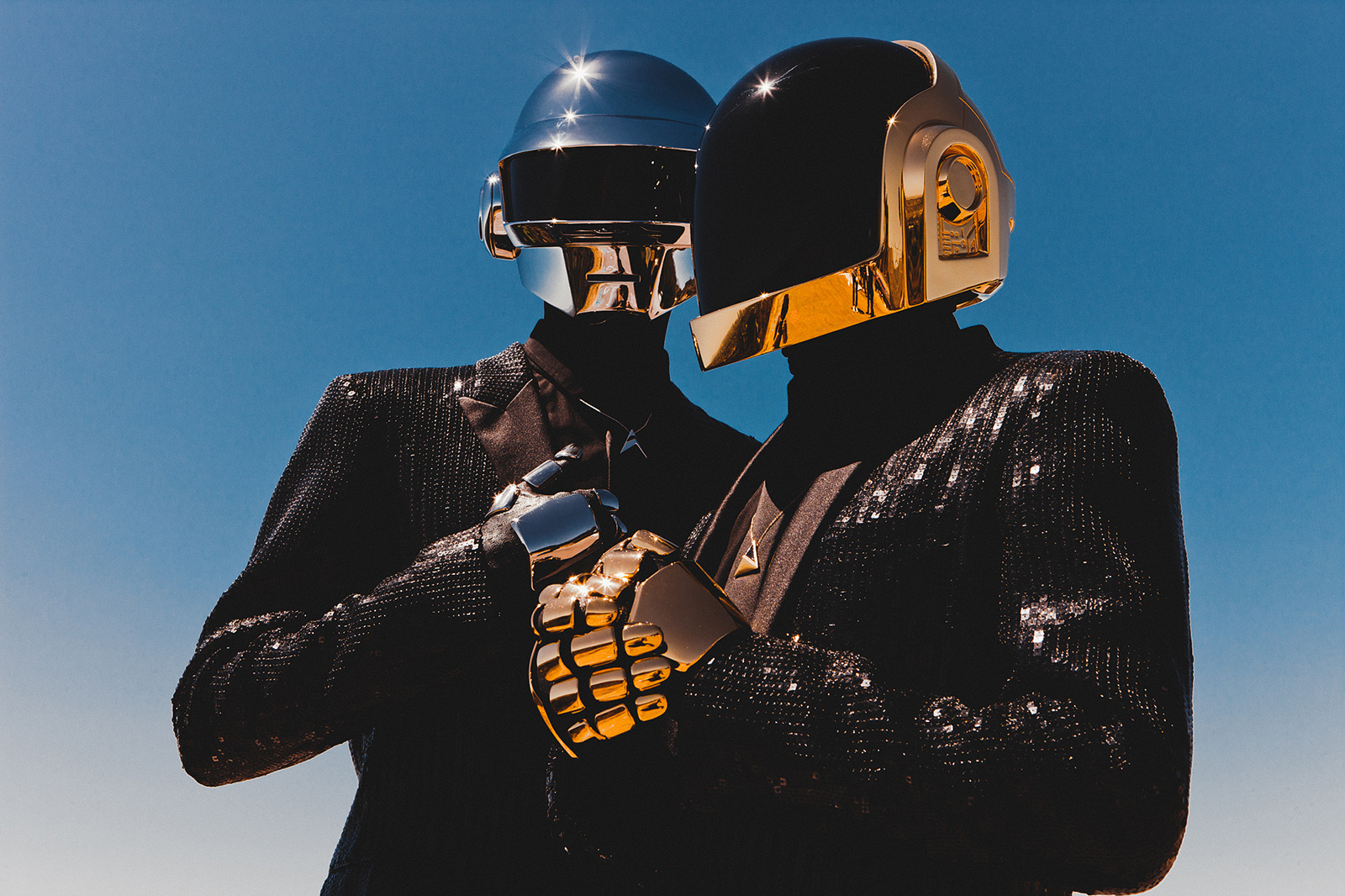Roaring ’90s: Daft Punk live shows change the face of electronic music

French electronic duo Daft Punk popularized electronic dance music by turning its shows into a highly kinetic audio-visual experience. (Nabil)
By Emily McCormick
Nov. 9, 2015 12:00 a.m.
The world of mainstream music is constantly transforming as new artists, styles and trends are embraced with each passing year. In spite of these changes, some musicians have maintained their popularity across decades, reinventing their sounds and careers. Each week, A&E columnist Emily McCormick will discuss the evolution of ’90s artists who have carried the spirit of their decade into today’s music scene.
Two men in robot suits and helmets stood at the forefront of the electronic dance music scene.
Today, it’s not uncommon for listeners to don similarly wacky costumes – and shell out hundreds of dollars – to hear electronic dance music, or EDM, live. EDM and its highly theatrical image are among today’s most lucrative and prevalent pop culture trends. Powerhouses like Disclosure and Skrillex dominate charts, and electronic-centric festivals like Electric Daisy Carnival and Hard Summer sell out instantaneously. You can’t turn on the radio, go to a party or even walk into a clothing store without hearing a bass drop.
The high-voltage electric culture we have today couldn’t exist without Guy-Manuel de Homem-Christo and Thomas Bangalter, known together as Daft Punk. The duo revamped music with drum machines and vocoders in the ’90s, creating hits like “Da Funk” in 1995. But even more significantly, Daft Punk popularized EDM by turning its shows into a highly kinetic audio-visual experience.
It started with the masks. De Homem-Christo and Bangalter lived their image: You’d be hard-pressed to catch them sans-spacesuit. On the surface, Daft Punk more closely resembles the machinery used in creating its music than living, breathing human musicians.
“We’re not performers, we’re not models – it would not be enjoyable for humanity to see our features,” de Homem-Christo told Rolling Stone Magazine in 2013. “But the robots are exciting to people.”
The duo took its cyborg-inspired image to the next level at Coachella 2006 with a show that set the standard for today’s live EDM show. There, Daft Punk brought out a giant glowing 3D pyramid to accompany its already otherworldly suits and songs. The spectacle was unexpected, unprecedented and unfaltering in the message it sent to other electronic artists. It wasn’t enough to just press play anymore – to be an EDM performer, you have to put on a show.
It’s hard to believe Daft Punk itself first emerged during the ’90s, a decade when live performances of EDM ultimately boiled down to sweaty DJs launching pre-generated samples from tiny booths onstage.
Strictly in terms of music, there were some notable innovators in ’90s electronica. The Prodigy blended electronic with rock and punk, and The Chemical Brothers brought in a psychedelic side. Seeing the groups live, however, offered little more of an experience than you could get from hearing them through headphones.
At Coachella and during its “Alive 2007” album tour shortly thereafter, Daft Punk bridged the gap between electronic dance music production and live performance. Beyond presenting a fantastic light show and robotics spectacle, Daft Punk placed an entire studio of equipment onstage.
Without a full band of instruments or a singer physically on stage at an EDM show, it’s easy to believe the DJs aren’t creating their music on the spot. But Daft Punk’s neon pyramid was fully equipped with Ableton software, Moog synthesizers and visual rigs, allowing them to make music in the moment, live, as any other pop or rock performer would be expected to do.
While I myself have not yet been fortunate enough to see Daft Punk live, I have viewed plenty of performances vicariously through the torrent of cellphone-captured videos audiences have uploaded online. Even in low-definition, Daft Punk has dazzled me with buzzing energy and Cirque du Soleil-level showmanship.
Daft Punk’s focus on imagery caught fire fast. Deadmau5, who performs behind a giant mouse head, has borrowed Daft Punk’s masked persona. Even EDM musicians choosing to remain humanoid – David Guetta, Zedd or Calvin Harris, to name just a few big names today – have designed performances as much about flashing lights, smoke machines and other visual aids as the audio technology.
While Daft Punk doesn’t have any upcoming live tour dates set and hasn’t put out a new album since 2013’s “Random Access Memories,” it does have a documentary, “Daft Punk Unchained,” expected for release in the U.S. before 2015 ends. In it, Kanye West called Daft Punk the most revolutionary musicians in dance music.
For once, I don’t think West is exaggerating. While the two members of Daft Punk may choose to hide behind trademark robot helmets, the spark they ignited for electronic dance music performances today has never been underexposed.
– Emily McCormick
What do you think of Daft Punk’s live performances? Email McCormick at [email protected].


